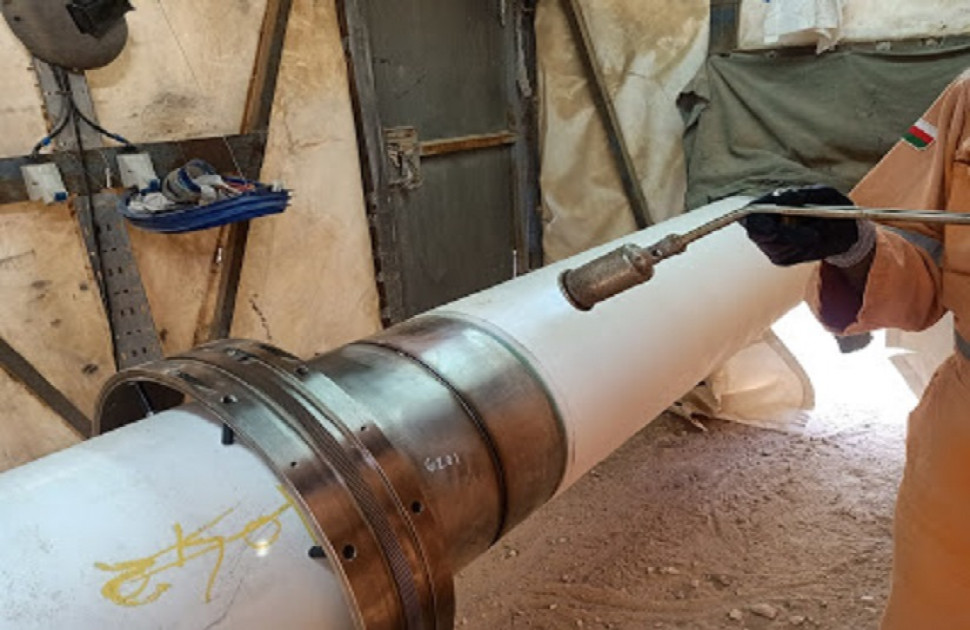Preheat
Preheating includes heating the base metal, either completely or simply the region surrounding the joint, to a specific desired temperature, called the preheat temperature, before welding. Heating might be kept during the welding process, however every now and again the heath from welding is adequate to keep up the desired temperature without a use of the heating source. The interpass temperature, characterized as the base metal temperature when the welding is to be performed between the first and last welding passes, can't be allowed to fall underneath the preheat temperature. Preheating can create numerous advantageous impacts; nonetheless, without a working information on the essentials in question, one dangers squandering cash, or far more terrible, debasing the integrity of the weldment.
Reasons to preheat
There are four essential motivations to use preheat: (1) it slow down the cooling rate in the weld metal and base metal, delivering a more ductile metallurgical structure with more noteworthy protection from cracking; (2) the more slow cooling rate gives an occasion to hydrogen that might be available to diffuse out innocuously, decreasing the potential for cracking; (3) it lessens the shrinkage stresses in the weld and contiguous base metal, which is particularly significant in exceptionally restrained joints;, and (4) it raises a few prepares over the temperature at which brittle fracture would happen in manufacture. Also, preheat can be utilized to help guarantee specific mechanical properties, for example, weld metal notch toughness.
In deciding if preheat, the following conditions to be considered: code requirements, segment thickness, base-metal chemistry, restraint, ambient temperature, filler metal hydrogen content, and past cracking issues. On the off chance that a welding code must be followed, at that point the code will mention the preheat temperature for a given base metal, welding process, and area thickness. This minimum value to be applied without considering restraint or variety in base metal chemistry; in any case, the minimum value can be expanded if important.
When there are no codes overseeing the welding, one must decide if preheat is required and provided that this is true, what preheat temperature will be suitable. As a rule, preheat as a rule isn't needed on low-carbon steels under 1 in (25 mm) thick. Be that as it may, as the science, diffusible hydrogen level of the weld metal, restraint, or section thickness builds, the requirement for preheat likewise increases.
Preheat temperature requirement
Welding codes for the most part indicate least values for the preheat temperature, which might be sufficient to avoid cracking in each application. For instance, if a beam- column association made of ASTM A572-Gr50 of high thickness (thicknesses from 4 to 5 in [100-125 mm]) is to be manufactured with a low hydrogen electrode, at that point minimum prequalified preheat of 225°F (107°C) is required (AWS D1.1-96, Table 3.2). In any case, for making butt joins in enormous segments, it is required to build the preheat temperature than the minimum prequalified level to that needed by AISC for making butt joints in heavy sections, to be specific 350°F (175°C) (AISC LRFD J2.8). This moderate proposal recognizes that the minimum preheat as recommended by AWSD1.1 may not be satisfactory for these restrained connections.
When no welding code is indicated, and the requirement for preheat has been set up, how can one decide a suitable preheat temperature? Considers AWS D1.1-96, Extension XI: "Rule on Alternative Methods for Determining Preheat" which presents two techniques for building up a preheat temperature grew fundamentally from the research center cracking tests. These strategies are gainful when the danger of cracking is expanded because of the chemical composition, a more prominent level of restraint, more elevated levels of hydrogen or lower welding heat input.
The two methods mentioned in Extension XI of AWS D1.1-96 are: (1) heat affected zone (HAZ) hardness control and (2) hydrogen control. The HAZ hardness control strategy, which is limited to filet welds, depends on the presumption that cracking won't happen if the hardness of the HAZ is kept under some basic value. This is accomplished by controlling the cooling rate. The basic cooling rate for a given hardness can be identified with the carbon equivalent of the steel, which is characterized as
CE=C + (Mn + Si)/6+(Cr + Mo + V)/5+(Ni + Cu)/15
From the critical cooling rate, the least preheat temperature would then be able to be determined. AWS D1.1-96 states that "In spite of the fact that the strategy can be utilized to decide a preheat level, its principle is calculating the minimum heat input (and subsequently least weld size) which avoids the hardening
The hydrogen-control technique depends on the consideration that cracking won't happen if the measure of hydrogen staying in the joint after it has cooled down to about 120°F (50°C) doesn't cross a critical value reliant on the composition of the steel and the restraint. This strategy is incredibly helpful for high strength, low-alloy steels that have high hardenability. In any case, the determined preheat might be fairly moderate for carbon steels
The three fundamental strides of the hydrogen control methods are: (1) calculate a composition boundary like the carbon equivalent; (2) Calculate a susceptibility list as a component of the composition boundary and the filler metal diffusible hydrogen content; , and (3) Decide the least preheat temperature from the restraint level, material thickness, and susceptibility list.
Application of preheat
The material thickness, size of the weldment and available heating equipment shall be considered when we consider for a method to apply preheat. For instance, small-production assemblies can successfully heated inside a furnace. However, large structural components required banks of heating torches, electrical strip heaters, or induction or radiant heaters.
Preheating carbon metal to a specific temperature generally isn't required. Although it's miles essential that the work be heated to a minimal temperature, it is also acceptable exceed to that temperature by way of about 100°F (40°C). However, this isn't always the case for some quenched and tempered (Q&T) steels which includes A514 or A517, considering that welding on overheated Q&T steels can be damaging in the warmness affected sector. Therefore, Q&T steels require that most and minimum preheat temperatures are applied and carefully observed.
When heating the joint to be welded, the AWS D1.1 code requires that the minimum preheat temperature be set up at a distance that is as a minimum identical to the thickness of the thickest member, however no longer much less than 3 in (75 mm) in all areas of welding locations. To ensure that the full material area around the joint is heated, it is advocated practice to heat the other side of that's to be welded and temperature to be measured. Finally, the interpass temperature have to be measured to verify that the minimum preheat temperature has been maintained in all passes.
Benefits of Preheating
• Preheat can reduce the chance of getting cracking and/or help to get desired mechanical properties like notch toughness.
• Preheat must be applied whenever any codes or standard demands it; if no codes doesn’t mention the preheat, then the welding engineer should provide necessary details for preheat by considering base metal composition and material thickness
• Annex XI of AWS D1.1-96 provides guidelines for alternative methods of determining proper amounts of preheat: the HAZ hardness and hydrogen control method.
• Preheat to be done in a furnace, or by using heating torches, electrical strip heaters, or induction or radiant heaters. Carbon steels which does not require specific temperature , but we need to follow maximum and minimum preheat temperatures andmust be monitored closely for quenched and tempered steels.
Source: https://www.theweldingdiary.co.in/2020/11/why-preheating-on-steels-its-benefits.html













